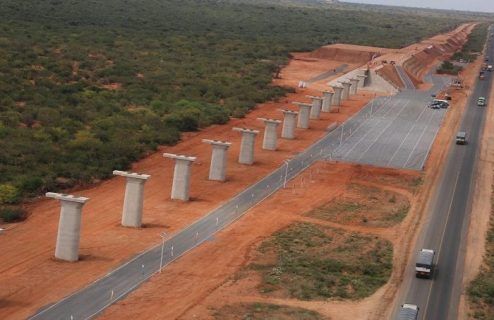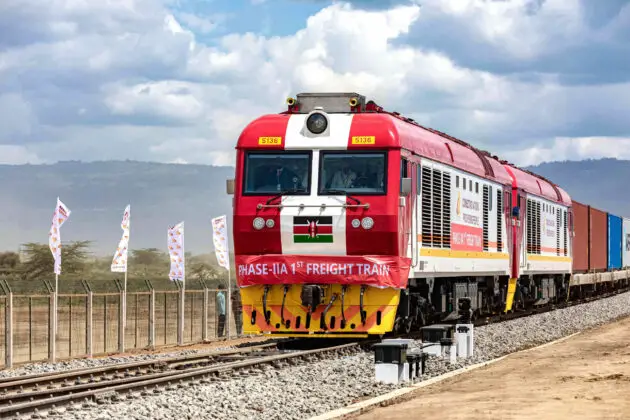The decision of the government to commence the construction of Naivasha-Kisumu-Malaba Standard Gauge Railway (SGR) by Kenya railways is a courage move at the nodal point of East Africa’s regional infrastructure development. This audacious project to improve transport links, which is gaining the favor of the different stakeholders from East Africa, is becoming popular and getting masses’ backing. The conference of ministers and sector heads from both countries was joined by the ambassadors from all member states, and the latter have proved to be instrumental in the role of harmonizing all technical standards and specifications for the SGR line.
Significance
Fundamentally, the success of this project is tied to the understanding of pivotal role of well-connected transportation networks to economic increase and regional unification. The SGR that creates a trunk line connecting key cities and economic centers is seeking to promote the transport of goods and the travel of people within the region as well as cutting down on transportation fares and trade limitations. The building of the project first rather shows the government’s pledge to upgrade infrastructure as the important element for societal attainment of the general welfare.
The Cabinet Secretaries and Minister of transport not only reiterated their intent to achieve the uncompleted Nairobi-Naivasha SGR bit, but also expressed a will to explore the possibility of extending it from Naivasha to the borders of Uganda, Rwanda, South Sudan and the Democratic Republic of Congo (DRC). This encompassing approach reflects a drawing a shared vision of establish a strong and integrated railway line systems that constitute cross borders linkage which connects the region moving the goods and people within the region smoothly.
Commencement date
Construction of of Naivasha-Kisumu-Malaba Standard Gauge Railway is set to commence late this year. Furthermore, the attendees talked about creating a maintenance plan for the SGR which covers the management of the assets and facilities of the SGR. It is a result of the active approach since it calls for some of the sustainable management and maintenance that make the train lines to work efficiently and smoothly now and in the future. Such issues can be resolved through government investments in infrastructure maintenance, which provides the means for governments to defend their investments and ensure smooth running of the concerned operations.

Moreover, the meeting serves as a platform to correlate the construction of water transport works with the end indicators of the SGR project. Primarily, this concerns the making of maps of the choke arrow points to enable smooth intermodal transportation along the Northern Corridor. Peer integration as a part of the land transportation such as railways and waterways makes it possible for countries to boost productivity and optimize logistics networks, which in the end will enrich connection as well as competitiveness.
The SGR develling agenda was even more reinforced by the demand for immediate arrangements, legislation, and institutionalization of relevant rules and principles. Such a joint action spotlights the regulatory and institutional task which stand above the infrastructure projects meaning that they must be properly developed and supported. Governments can eliminate tedious processes and encourage all stakeholders to work together in order to avoid the red tape and subsequently faster completion of all projects.
Challenges
Notwithstanding that there is an improvement, this is not a smooth trip. Hinderances still exist as illustrated by the delays and breakdowns experienced in the course of building the SGR. While the deal on the economic and financial parts of South Sudan railway between Kenya railway and the Ugandas pricks, it is the renewed dedication to conquer impediments and further the project. Through such active partnership programs the region acknowledges the critical role that co-operation plays in the effective resolution of the common problems and the achievement of specific objectives, which are mutually beneficial. In the last analysis, the government’s pledge to the beginning of the either Naivasha-Kisumu-Malaba and Malaba-Kampala, is a great step in regional infrastructure development.
Besides the Head of States as the guests of the host countries, a number of strategic partner states were also in attendance at the meeting to include representatives from Somalia, Rwanda as well as the Democratic Republic of Congo while this is a clear assertion of regional significance in the SGR project. In the year of 2014, Kenya, Rwanda, and Uganda agreed to the tripartite pact as an initial step in the strengthening of the multilateral cooperation amongst developing countries which illustrates the start of collective activities and quicker integration of the countries into one unit.
The coordination of the SGR project and the promotion of partnerships among the member states constitute the undertaking that enables governments to be part of the initiative that promotes intercontinental transport, growth, and integration.
Read also $13.8 Billion 3000-Kilometre Kenya-Ethiopia Railway Construction Agreement Signed
Read also China to Fund Kenya Standard Gauge Railway Extension Project

